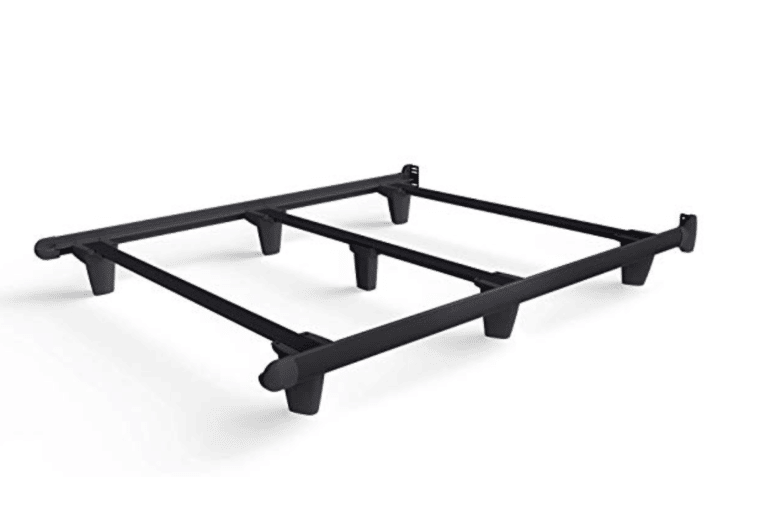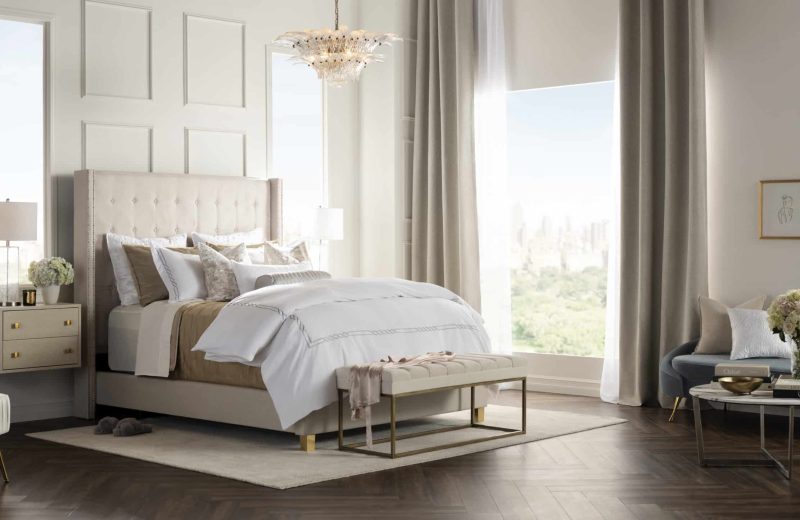
The mattress market features hundreds of designs, materials, and features that can be matched to each sleeper. These needs are based on a few factors, such as the sleeper’s body type, sleeping position, bone and muscle health, and even the size of the bedroom. In spite of all your physical needs, the element that seems to matter most for all shoppers is the price.
Mattresses can range from as low as $300 and stretch into the tens of thousands of dollars, and each variation and mattress feature plays a role in determining the cost. Understanding different mattress types and benefits will help you determine what is important to your sleeping habits so that you can make a decision that balances costs with your physical and sleep needs.
When looking at the price of different mattresses, you will first want to take into account the materials that it’s made with. Latex mattresses are some of the best, but they tend to be on the more expensive side. The latex has to be sourced from a single species of plant, the Brazilian rubber tree. Traditional innerspring mattresses and cheaper foam mattresses use materials that are able to be manufactured inexpensively, enabling them to come in more budget-friendly designs and more complex, high-quality designs. It is definitely recommended that you purchase the highest quality you can afford.
A good mattress can last up to 10 years, where a cheap one will wear in less than half of that time, which costs you more money in the long run.
These mattresses are made up primarily of coiled springs and feature a thinner foam comfort layer on top. The coil gauge used for mattresses ranges from 18 gauge to 12 gauge, with the thicker coil being sturdier, longer-lasting, and more expensive. Innerspring coils come in a variety of different styles, from pocketed springs and microsprings to bonnells or offset coils. Pocketed spring coils are better at reducing motion transfer, keeping their shape longer, and have a more complicated construction. This all increases the price. Less expensive innerspring coil designs like bonnell or offset can begin to wear out after only two to five years. Midrange innerspring can be expected to last five to 10 years. The average cost of an inexpensive innerspring queen mattress is less than $700; the midrange is between $700 and $1,000, and more than $1,000 for a luxury queen mattress.
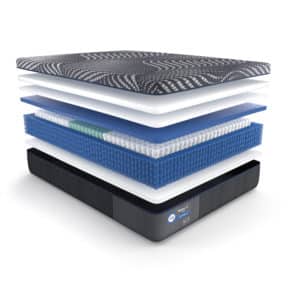
Hybrid Mattresses attempt to combine the best of both worlds, taking advantage of the body-hugging attributes of memory foam or latex and the springiness of spring coils. Owing to their complex design, hybrid models tend to be more expensive than their innerspring or memory foam counterparts. Inexpensive hybrids cost about $1,000 or below. Midrange hybrid models cost approximately $1,000 to $2,000. Luxury hybrids are over $2,000. The quality of the materials used and the size of the mattress needed significantly impact the price. Hybrid models are made from a variety of different coil types, and the tops can be made of either latex or memory foam. They can be expected to last anywhere from seven to 10 years.
Natural latex mattresses are typically one of the more expensive mattress types. This is because they are sourced from the Brazilian rubber tree and must be converted into foam through a labor-intensive process. There are two methods for forming the latex foam used for mattresses: Dunlop or Talalay. Talalay latex is lighter and less dense than Dunlop, which is heavy and dense. Luxury latex mattresses usually contain a combination of the two. Latex is the most hypoallergenic and longest-lasting mattress material, and a midrange-quality hybrid costs between $1,000 and $2,000. Higher-end models can easily cost upwards of $2,000, especially if you want a queen or king size.
Memory foam mattresses are made from multiple pieces of memory foam of different densities. The top comfort layer is softer to allow your curves to sink into the firmer, supportive layers deeper in the mattress. An average memory foam mattress costs around $1,200, with lower-end models coming in below $900 and higher-end models at over $2,000. You can discern between high-quality and low-quality memory foam by its density. Two-pound foam is less dense and could need to be replaced in as little as two years. High-quality, four-pound, and upward foam can last for close to 10 years without signs of wear.
There are additional factors influencing the cost of your mattress other than the materials it is made of. These include the size of your mattress, its warranty, shipping costs and availability, whether or not you need a mattress base, and what type. Adjustable bases typically cost more but be on the lookout for promotions that offer discounts on these types of bases. The time of year you purchase your mattress will also influence the overall cost to you.
Many manufacturers offer savings from $500 to $1,000 on popular models during holidays, especially if you need a new base as well.
Prices vary between sizes. A twin mattress is the least expensive, and queen and king mattresses, will be at the upper end of the price range. Less common sizes, like twin XL and Cal king, will typically be a bit more expensive than standard sizes. It is not uncommon to find the price difference between twin and queen/king size for the same mattress to be $1,000.
Mattress warranties are not all the same, so be sure to read the fine print before making your purchase. Most good-quality mattresses are backed by strong warranties, some are prorated, and others are not. Prorated means that you won’t incur additional replacement costs besides shipping of the mattress you are returning. Non-prorated warranties mean you may be charged an additional cost for the replacement mattress. The average warranty length is about 10 years, and most warranties will expect you to cover the shipping fees associated with returning the defective mattress. Things like, “Oops, I spilled a glass of wine,” or “My puppy chewed the corner,” will not be covered.
Mattress World Northwest offers a comfort guarantee: a 90-day period after purchase, during which you can exchange your mattress if you are not completely happy with it.
Unless you are buying a mattress-in-a-box, mattresses are large and unwieldy items to ship. Much more manpower is required than the bottle of vitamins you ordered on Amazon delivered via USPS. Unless you have arranged for a white-glove delivery service, you will be responsible for the task of unloading your old mattress. Mattress World Northwest offers this service as well.
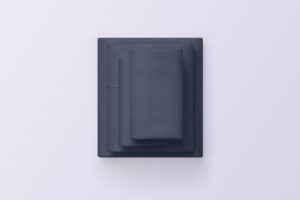
National holidays are the best times to purchase a new mattress as the manufacturers roll out some of their biggest deals of the year.
Memorial Day, 4th of July, Thanksgiving/Black Friday, Christmas, and President’s Day are some of the best times of the year to keep your eyes peeled for good deals.
A high-quality mattress should last roughly 10 years. If you buy one that isn’t high-quality, you may have to buy again in a shorter time frame. There are other factors that influence this, too, apart from just the material.
Always use a mattress protector to protect your mattress from spills, dust, and potential allergens. Regular cleaning and vacuuming will help your mattress last longer. Some models are designed to be flipped, others are not. Be sure to know which kind you are getting prior to purchase.
The weight of the person sleeping on the mattress should play into your decision on whether to go for a firm mattress, a medium firm one, or a softer mattress. Those who are less than 150 pounds, will probably enjoy a mattress that is on the softer end of the range. People between 150 and 200 pounds, will probably like a medium firm mattress. People over 200 pounds will most likely want something firmer to keep their spine in a neutral position. A heavier person might wear out the springs of an innerspring mattress or cause impressions to form faster on a memory foam mattress.
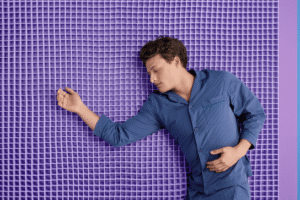
The sleep specialists at Mattress World Northwest are knowledgeable and will guide you toward the perfect mattress for your sleep style and budget. Stop by any one of our 23 stores in the Portland area and talk to us about your sleep needs today!
While you can't go wrong with any of our mattresses, here are a few factors you'll want to consider before making a purchase: your sleep position (and if you have a partner, theirs as well), the size of the space, and a price point. If you have any questions, rest easy knowing that our team is happy to help you find that perfect fit.
| Size | Dimensions |
|---|---|
| Twin | 38″ wide x 75″ long x 9.25″ tall |
| Twin XL | 38″ wide x 80″ long x 9.25″ tall |
| Full | 54″ wide x 75″ long x 9.25″ tall |
| Queen | 60″ wide x 80″ long x 9.25″ tall |
| King | 76″ wide x 80″ long x 9.25″ tall |
| Cal King | 72″ wide x 84″ long x 9.25″ tall |
| Split King (2pk) | 38″ wide x 80″ long x 9.25″ tall |
Mattress World Northwest makes it easy to choose the right foundation for your space and lifestyle.
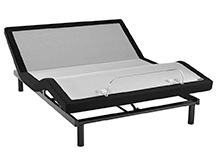

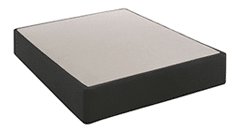
Reliable support for your boxspring and mattress.
